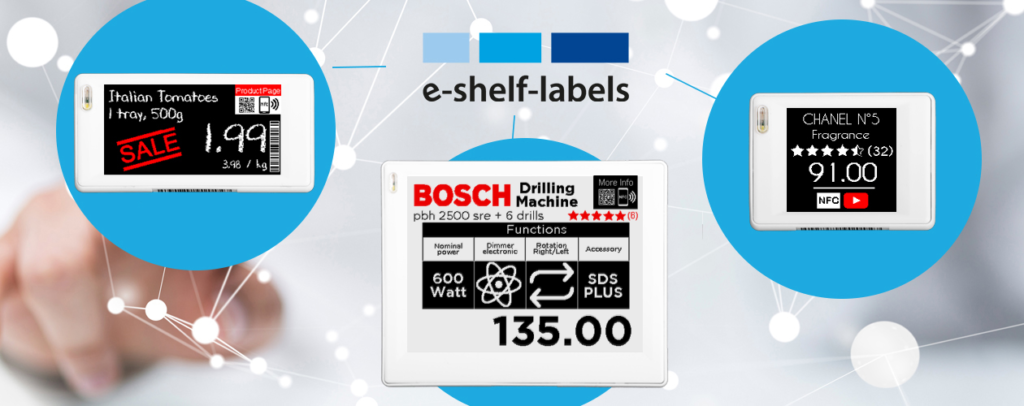
Electronic Shelf Labels (ESL) is proving to be a transformative technology in an era marked by rapid technological advancement and evolving consumer behavior. The retail sector is increasingly adopting innovative technologies to streamline operations, improve customer experience, and bolster their bottom lines. Here, we delve into the multifaceted advantages of ESLs and how they can significantly revolutionize retail operations.
What are Electronic Shelf Labels (ESLs)?
ESLs are digital price tags that can be attached to store shelves. Unlike traditional paper tags, they connect to the store’s back-end system wirelessly, enabling instant price updates, promotional messaging, and more. Most ESL modules are constructed using LCD displays or E-paper, in order to showcase graphic imaging and higher resolution. With their technological nature, electronic shelf labels have many benefits and advantages compared to their paper counterparts.

Benefits of ESLs for Retailers
Dynamic Pricing
Real-time Adjustments: With ESLs, retailers can instantly update prices across the store. This dynamic pricing approach lets them respond to market conditions, competitive pricing, or inventory levels in real time.
Promotions and Discounts: Stores can easily run flash sales or limited-time promotions, ensuring that the displayed price always matches the checkout price.

Operational Efficiency
Labor Savings: Updating paper price tags is time-consuming. ESLs reduce the need for manual price changes, thereby saving hours of labor each week.
Error Reduction: Manual updates can lead to pricing discrepancies. ESLs ensure accurate and consistent pricing across all channels as well as immediate changes as needed.
Enhanced Customer Experience
QR Codes and NFC: Modern ESLs often come equipped with QR codes or NFC chips, allowing customers to access additional product information, reviews, or even augmented reality experiences.
Stock Availability: Some ESL systems can be integrated with inventory management systems, indicating product availability or offering alternatives if an item is out of stock.
Better Readability: Information can be displayed larger, clearer, and brighter with no risk for smudging or handwriting discrepancies.

Sustainability
With the elimination of paper tags, retailers reduce their carbon footprint. No more frequent printing and no more paper materials means less waste and a more eco-friendly retail environment.
Although electronic shelf displays require a power source, most only use energy when changing price tags and use no power to maintain a current image. Additionally, most use batteries that can last up to 10 years on average.
Integration with Other Retail Technologies
ESLs can be integrated with various systems, including:
- Inventory Management: To ensure stock levels are reflected in real time. Traceability becomes possible, especially for managing rentable items and re-commerce.
- Loyalty Programs: Allowing personalized discounts or offers to be displayed based on the customer’s profile.
- Smart Carts: To automatically adjust the total bill as customers add or remove items from their carts.
Electronic Shelf Labels – The Road Ahead
Electronic shelf labels do pose some cons that need to be addressed and improved upon. Retailers must consider additional energy usage, but as electronic shelf labels become more energy efficient, this can become less of an issue over time. Just like most pieces of technology, care, and maintenance will have to be taken to make sure that the devices do not malfunction or are improperly used.

With advancements like E-ink displays, longer battery life, and increased interconnectivity, the ESL technology is poised to become even more prevalent in the retail landscape. The global ESL market, valued at $464 million in 2019, is expected to grow at a CAGR of 20.8% from 2020 to 2027. This suggests a broad recognition of the value and efficiency ESLs offer.
The retail sector is undergoing significant transformation, driven by technology and evolving consumer demands. ESLs are a testament to this transformation, offering retailers a plethora of operational advantages while enhancing customer experience. For any retailer aiming for agility, sustainability, and improved profitability, ESLs are no longer a luxury but a necessity.
Another technology that business retailers should quickly consider is RFID, and you can read all about it on our blog.
